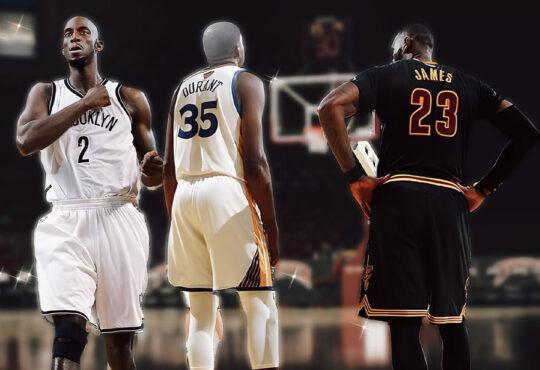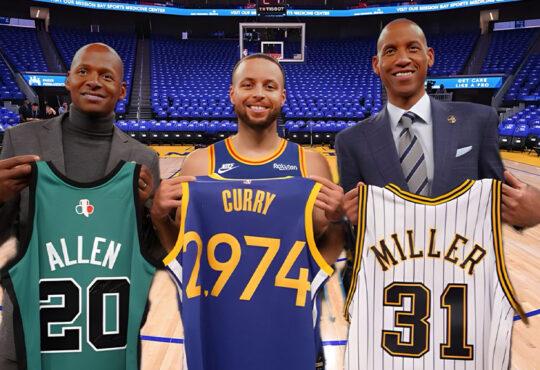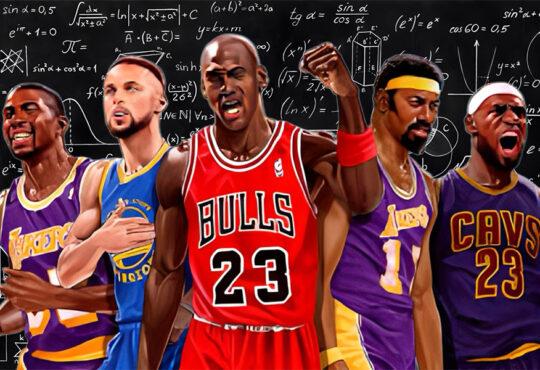
What is D-1 basketball?
What is D-1 basketball? NCAA Division 1 is the highest level of intercollegiate basketball sanctioned by the National Collegiate Athletic Association (NCAA), which accepts players globally. D-1 schools include the major collegiate athletic powers, with large budgets, more elaborate facilities, and more athletic scholarships than Divisions 2 and 3 as well as many smaller schools committed to the highest level of intercollegiate competition.
This level was once called the University Division of the NCAA, in contrast to the lower level College Division. These terms were replaced with numeric divisions in 1973. The University Division was renamed Division 1, while the College Division was split in two; the College Division members that offered scholarships or wanted to compete against those who did became Division 2, while those who did not want to offer scholarships became Division 3.
Which schools play in D-1?
For the 2021–22 school year, Division 1 contained 357 of the NCAA’s 1,066 member institutions.
Schools must field teams in at least seven sports for men and seven for women or six for men and eight for women, with at least two team sports for each gender. Teams that include both men and women are counted as men’s sports for the purposes of sponsorship counting. Division 1 schools must meet minimum financial aid awards for their athletics program, and there are maximum financial aid awards for each sport that a Division 1 school cannot exceed. Several other NCAA sanctioned minimums and differences distinguish Division 1 from Divisions 2 and 3.
Members must sponsor at least one sport (not necessarily a team sport) for each sex in each playing season (fall, winter, spring), again with coeducational teams counted as men’s teams for this purpose. There are contest and participant minimums for each sport, as well as scheduling criteria. For sports other than football and basketball, Division I schools must play 100 percent of the minimum number of contests against Division 1 opponents—anything over the minimum number of games has to be 50 percent Division 1. Men’s and women’s basketball teams have to play all but two games against Division 1 teams; for men, they must play one-third of all their contests in the home arena.
NCAA Division 1 Men’s Basketball Tournament
The NCAA Division 1 Men’s Basketball Tournament, also known and branded as NCAA March Madness, is a single-elimination tournament played each spring in the United States, currently featuring 68 college basketball teams from the Division 1 level of the NCAA, to determine the national championship.
The tournament was created in 1939 by the National Association of Basketball Coaches and was the idea of Ohio State coach Harold Olsen. Played mostly during March, it has become one of the biggest annual sporting events in the United States.
It has become extremely common in popular culture to predict the outcomes of each game, even among non-sports fans. It is estimated that tens of millions of Americans participate in a bracket pool contest every year. Mainstream media outlets such as ESPN, CBS Sports, and Fox Sports host tournaments online where contestants can enter for free. Also, there are many sites that cater to corporate marketing and public relations to get in on the excitement such as BigTourney.com.
Employers have also noticed a change in the behavior of employees during this time: they have seen an increase in the number of sick days used, extended lunch breaks, and even the rescheduling of conference calls to allow for more tournament watching. Many handicappers and pundits also offer advice for winning their own bracket.
The tournament teams include champions from 32 Division 1 conferences (which receive automatic bids), and 36 teams that are awarded at-large berths. These “at-large” teams are chosen by an NCAA selection committee, then announced in a nationally televised event dubbed Selection Sunday.
The 68 teams are divided into four regions and organized into a single-elimination “bracket”, which pre-determines – when a team wins a game – which team it will face next. Each team is “seeded”, or ranked, within its region from 1 to 16. After the First Four rounds, the remainder of the tournament begins on the third Thursday of March and is played over the course of three weekends, at pre-selected neutral sites across the United States.
Teams, seeded by rank, proceed through a single-game elimination bracket beginning with the First Four round, a first-round consisting of 64 teams playing in 32 games over the course of a week, the “Sweet Sixteen” and “Elite Eight” round the next week and weekend, respectively, and – for the last weekend of the tournament – the “Final Four” round. The two Final Four games are played the Saturday preceding the first Sunday in April, with the championship game on Monday. These four teams, one from each region (East, South, Midwest, and West), compete in a preselected location for the national championship.
The tournament has been at least partially televised on network television since 1969. Currently, the games are broadcast by CBS, TBS, TNT, and truTV under the trade-name NCAA March Madness. These networks paid the NCAA to broadcast the games in 2011. The contract was for 14 years and they paid $10.8 billion. However, in 2018 that contract was extended for another seven years making it valid through the year 2032. The average payment over the years comes out to be $891 million annually. Since 2011, all games are available for viewing nationwide and internationally. As television coverage has grown, so too has the tournament’s popularity. Currently, millions of Americans fill out a bracket, attempting to correctly predict the outcome of 63 games of the tournament (not including the First Four games).
With 11 national titles, UCLA has the record for the most NCAA Men’s Division I Basketball Championships. John Wooden coached UCLA to 10 of its 11 titles. The University of Kentucky is second, with eight national titles. The University of North Carolina is third, with six national titles, and Duke University and Indiana University are tied for fourth with five national titles. The University of Connecticut (UConn) and the University of Kansas (KU) are tied for sixth with four national titles. Villanova University is seventh with three national titles. The University of Cincinnati, the University of Florida, the University of Louisville, Michigan State University, North Carolina State, Oklahoma State, and the University of San Francisco all have two national titles. The tournament expanded to 64 teams in 1985, 65 in 2001, and 68 in 2011.
Both 2020 men’s and women’s tournaments were canceled due to the COVID-19 pandemic. The 2021 tournament was subsequently played at various venues in Indiana, the first and only time that a tournament has been hosted in its entirety by one state.
Qualifying
A total of 68 teams qualify for the tournament played during March and April. Thirty-two teams earn automatic bids as their respective conference champions, all of which are awarded via conference tournaments at the end of the regular season.
The remaining 36 tournament slots are granted to at-large bids, which are determined by the Selection Committee and announced in a nationally televised event on a Sunday before the tournament starts, dubbed Selection Sunday by the media and fans. The committee primarily consists of conference commissioners and school athletic directors who are appointed by the NCAA.
Regions
The tournament is divided into four regions and each region has at least sixteen teams. Regions that do not include the First Four games have exactly sixteen teams. The committee is charged with making each of the four regions as close as possible in the overall quality of teams from wherever they come from.
The names of the regions vary from year to year and are broadly geographic (such as “East”, “South”, “Midwest” & “West”). From 1957 to 1984, the “Mideast”, roughly corresponding to the Southeastern region of the United States, the designation was used. From 1985 to 1997, the Mideast region was known as “Southeast” and again changed to “South” starting from 1998.
The selected names roughly correspond to the location of the four cities hosting the regional finals. From 2004 to 2006, the regions were named after their host cities, e.g. the Phoenix Regional in 2004, the Chicago Regional in 2005, and the Minneapolis Regional in 2006, but reverted to the traditional geographic designations beginning in 2007. For example, in 2012, the regions were named South (Atlanta, Georgia), East (Boston, Massachusetts), Midwest (St. Louis, Missouri), and West (Phoenix, Arizona).
Seeding and bracket
The selection committee ranks the whole field of 68 teams from 1 to 68, these are referred to as the true seed. The committee then divides the teams among the four regions, giving each a seed between No. 1 and No. 16. The same four seeds in all the regions are referred to as the seed line (i.e. the No. 6 seed line). Eight teams are doubled up and compete in the First Four. Two of the paired teams compete for No. 16 seeds, and the other two paired teams are the last at-large teams awarded bids to the tournament and compete for a seed line in the No. 11 to No. 14 range, which varies year to year based on the true seeds of the teams overall.
Teams are placed in the closest geographical region to reduce travel time. However, teams are moved to other regions to follow several rules for ensuring competitive balance and avoiding rematches from the regular season in early rounds.
The top four overall seeds are placed as No. 1 seeds in each region. The regions are paired so that if all the No. 1 seeds reached the Final Four true seed No. 1 would play No. 4 and No. 2 would play No. 3. The No. 2 teams are preferably placed so that the No. 5 true seed will not be paired with the No. 1 true seed. The committee ensures competitive balance among the top four seeds in each region by adding the true seed values up and comparing the values among the regions. If there is a significant deviation, some teams will be moved among the regions to balance the true seed distribution.
If a conference has two to four teams in the top four seeds, they will be placed in different regions. Otherwise, teams from the same conference are placed to avoid a rematch before the regional finals if they have played three or more times in the season, the regional semifinals if they have played twice, or the second round if they have played once. Additionally, the committee is advised to avoid rematches from the regular season and the previous year’s tournament in the First Four. Finally, the committee will attempt to ensure that a team is not moved out of their preferred geographical region an inordinate number of times based on their placement in the previous two tournaments. To follow these rules and preferences, the committee may move a team off of their expected seed line. Thus, for example, the 40th overall ranked team, originally slated to be a No. 10 seed within a particular region, may instead be moved up to a No. 9 seed or moved down to a No. 11 seed. Since 2012, the committee has released the No. 1 to 68 true seed list.
Rounds
The tournament consists of several rounds. They are named in order of first to last:
- The First Four
- The First Round (the Round of 64)
- The Second Round (the Round of 32)
- The Regional Semi-finals (participating teams are known popularly as the “Sweet Sixteen”)
- The Regional Finals (participating teams are known commonly as the “Elite Eight”)
- The National Semi-finals (participating teams are referred to officially as the “Final Four”)
- The National Championship
The tournament is single-elimination, which increases the chance of an underdog and lower-seeded “Cinderella team” advancing to subsequent rounds. Although these lower-ranked teams are forced to play stronger teams, they need only one win to advance instead of needing to win a majority of games in a series, as in professional basketball.





